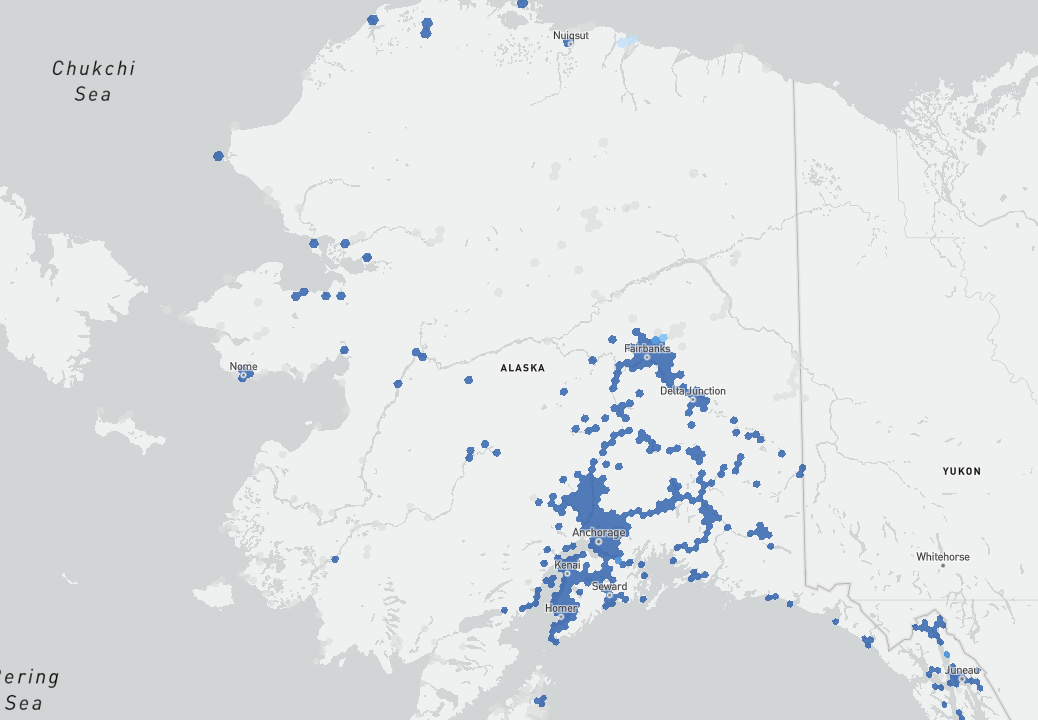
Two Cheers for the BEAD Allocations
It’s finally here. On Monday, more than eighteen months after President Biden signed the Infrastructure Investment and Jobs Act, the administration has at last released each state’s broadband grant allocations. The Broadband Equity, Access, and Deployment (BEAD) grant program will distribute $42.5 billion to states to expand broadband to rural areas. The program was intended to close the digital divide once and for all by providing a $100 million minimum to each state, the District of Columbia, and Puerto Rico, with the remainder allocated based on the proportion of unserved Americans residing in each state, according to new FCC maps. Additionally, $10 billion is set aside for high-cost, geographically challenging areas that are more expensive to reach.
Now that allocations are public, we can ask how well Congress did at designing the funding formula. While not all rural residents are unserved (indeed, a slim majority do have high-speed internet), most unserved Americans do live in remote, rural areas. States with the largest rural populations should therefore expect to receive the most funding, except for a few outliers like Alaska and West Virginia which have small populations but are full of high-cost and geographically challenging areas.
So, how did Congress do? Surprisingly, they did fairly well. In general, the states with the largest rural populations received the most money, with the more costly and challenging states receiving disproportionately high allocations. Texas, for example, received the most BEAD funding by a large margin ($3,312,616,455), a 55% greater allocation than second-place California. Texas has over 1.2 million more rural residents than any other state, with more than 4.7 million of its citizens living in rural areas. As Texas likely contains the largest number of Americans without broadband due to the geographically challenging rural regions of the state, the outsized funding is warranted in this circumstance.

The chart above compares the rural population in each state to its BEAD allocation. As the chart illustrates, there is a slightly positive exponential relationship between these two variables. In other words, the size of a state’s rural population positively correlates with each state’s BEAD allocation. Generally speaking, a state with an outsized rural population, such as Texas, received more funding than a state with a larger overall population but a smaller rural population, such as California. New York also has a large population, but is so highly urbanized that it is on the lower end of allocations. This is not to say, however, that those states received insufficient funding. In particular, California was the second-highest recipient of BEAD funding but by a much smaller margin. Additionally, California has a considerable rural population with over 2.2 million Americans residing in small communities away from the coast, and it is a very large state geographically. This level of funding makes sense for California’s needs.
As mentioned earlier, Alaska is also a notable outlier. The state received over $1 billion in funding, which was more money than the government allocated to 18 other states with larger rural populations. West Virginia, despite having the second-lowest number of rural citizens among the states that received over one billion dollars in funding, has nearly four times the number of rural citizens compared to Alaska.

In both cases, these states have benefitted from $10 billion set-aside for high-cost, geographically challenging areas. Alaska is, by far, the most expensive state to build in, and the most reliable technologies are not feasible there since it is impossible to lay fiber over permafrost to reach remote communities. West Virginia, for its part, is almost entirely mountainous and cell signals are easily blocked from valley towns, making 5G unreliable. Ensuring coverage for each individual rural citizen is more difficult to accomplish in geographically complex states like these compared to the rest of the country. This reality explains Congress’s decision to allocate $10 billion specifically for high-cost geographically challenging areas, including much of the land in Alaska. Thus, even these discrepancies can be attributed to the federal government’s good faith attempt to bridge the digital divide.
Based on the relationship of the rural population of each state to their BEAD allocation, we can conclude that Congress did a reasonably good job with the funding formula. Why only two cheers then? As we are fond of reminding the public, federal spending of this magnitude on broadband is inefficient, almost certain to be wasteful, and possibly unnecessary. Since 1996, the private sector has invested over $1.7 trillion in broadband without the federal government’s help, and more than 93% of Americans enjoy broadband access today. The last time the federal government spent significantly on broadband, as part of Obama’s 2009 stimulus package, little progress was made and consultants enriched themselves. There are built-in inefficiencies in this program as well. Most notably, Washington DC received more than $100 million that should go to rural, unserved areas. DC is only receiving about $700,000 in need-based funds beyond the $100 million minimum, making its inclusion in the BEAD program even more absurd.
With this in mind, it is imperative that states use their BEAD allocations as responsibly as possible. It would be a travesty of public finance if BEAD results in little more than a colossal waste of taxpayer dollars. The funding formula has given states with large rural populations a generational opportunity to deliver service to their last unserved residents (even if the private sector is coming quite close to accomplishing this goal on their own). State legislators and broadband officials ought to take their responsibility to get this right very seriously, and they should consult Digital Liberty’s handbook on best practices for effective broadband expansion. Congress managed to avoid disaster in allocating the funding; states must now do the same with its implementation.